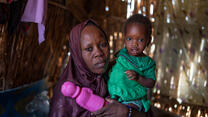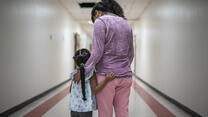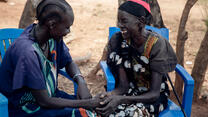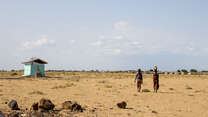Urbanization is changing the nature of humanitarian response.
In the 21st century, the phenomenon is most prevalent in developing countries; it is estimated that cities in developing countries will account for 96 per cent of urban population growth between 2013 and 2030. Today, 80 per cent of all refugees worldwide are found in developing countries and 60 per cent of the global refugee population, or 36 million refugees, reside in urban areas.
As urbanization continues, these refugees increasingly find themselves in competition with economic migrants and with long-term urban residents for access to public services and economic opportunities in cities and towns. The struggle of urban dwellers to access services and economic opportunities is best encapsulated using Henri Lefebvre’s concept of the Right to the City, which provides a social lens through which to analyze the relative enjoyment of rights and access that different marginalized populations have to the city.
Humanitarians responding to displacement crises in urban areas, therefore, must take particular care to ensure that displaced populations and vulnerable communities alike enjoy the Right to the City to the same extent as all other urban dwellers. This is particularly important in reference to their ability to safely and fairly access public and social services and opportunities for sustainable self-reliance, as well as to avoid social discrimination and exploitation based on their race, ethnicity, religion or culture.
With this goal in mind, this report presents an analysis of the challenges that displaced populations face in accessing services and achieving self-reliance in Dar es Salaam, Tanzania, a developing and fast-growing city. The findings and recommendations, intended primarily for humanitarian actors, are derived from qualitative research conducted in Dar es Salaam between March and October 2016. This research draws upon the perspectives and experiences of urban displaced, Tanzanians, local and national government, and organizations directly involved with urban refugee programming in the city.
Findings
- The majority of displaced living in Dar es Salaam do not have permission to live or work in Tanzania. Those who do so without authorization risk serious consequences – even deportation – if discovered. Therefore they cannot safely access services from public (national and municipal) actors in Dar es Salaam.
- Negative stereotypes regarding the urban displaced population exacerbates the challenges that are specific to their status, and can result in a hostile, insecure living environment, where discrimination and exploitation are commonplace.
- Given their fear of discrimination and exploitation, displaced living in Dar es Salaam go to great lengths to hide the fact that they are non-citizens (even when they have authorization to live in the city).
- Urban displaced often join marginalized neighbourhoods, and many of the challenges they face in accessing services such as healthcare and education may also affect the host population.
Recommendations
- Humanitarians should ensure that urban displaced populations are aware of services available to them both through local service providers and NGOs (local and international). Mapping existing services (public, private and NGO) is essential. In particular, displaced persons should have clear, reliable information regarding the implications of their migration status or place of residence when accessing services. Humanitarians should work with local partners (from both the public and private sectors) as well as national-level and international actors to ll service gaps. When displaced persons face barriers to accessing services, humanitarian organizations should advocate to create new or influence existing policies to remove the barriers of access and push for more inclusive service delivery channels on the part of public actors. Lastly, humanitarians should act as a watchdog to ensure that displaced persons don’t fall into the cracks of various levels of government service provision.
- Humanitarians should have clear guidelines and programmatic approaches to combat discrimination against urban displaced and marginalized members of the host communities, promoting social cohesion between diverse groups. In order to do so, humanitarians should first gain a full understanding of the drivers of social tension and discrimination, which are often more complex than a simple refugee versus host population divide.
- Humanitarians should develop a robust understanding of the vulnerabilities shared by multiple marginalized populations living in a single neighborhood, area, or socio-economic group and how to best address those vulnerabilities through targeted humanitarian involvement. This means taking a community- or area-based and multi-sectoral approach to programming, while also engaging in meaningful partnerships with other organizations, including non-traditional humanitarian partners, employing similar approaches.



